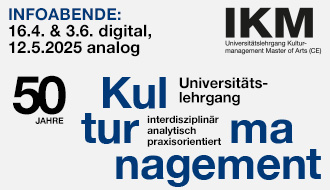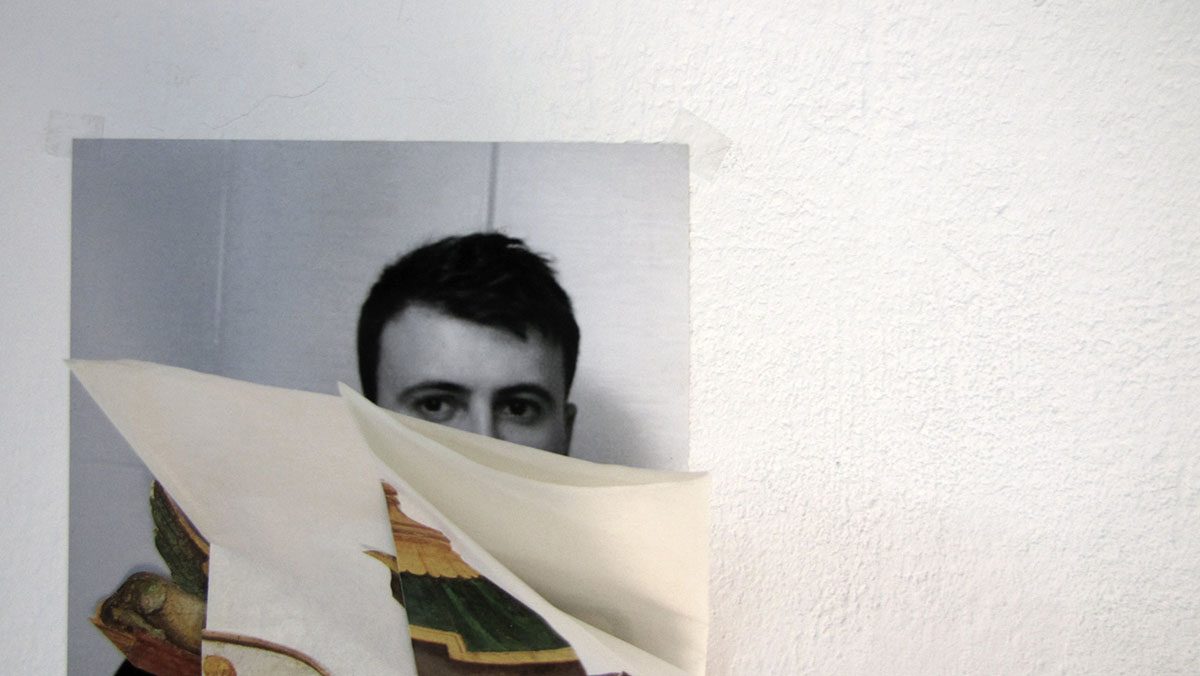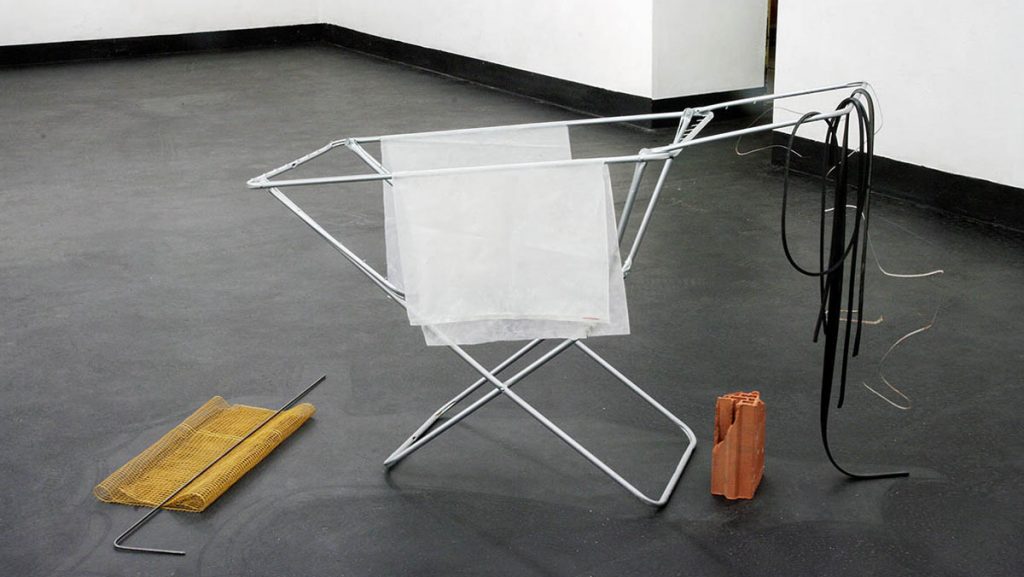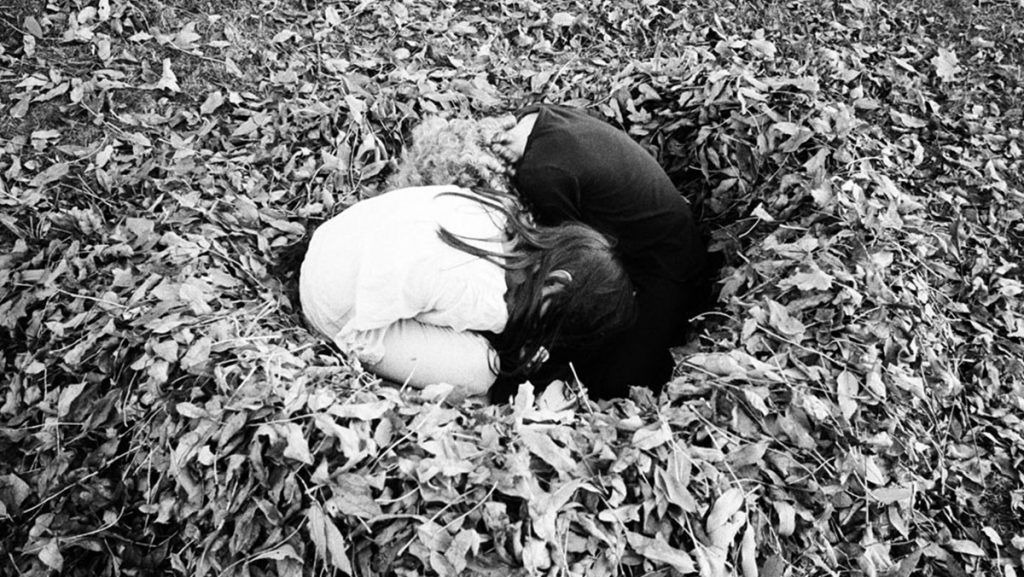Adrian Ghenie: I’m sorry that we’re meeting a bit later, but I’ve been painting until late last night, almost until morning.
Bogdan Teodorescu: Thank you for making time for me.
AG: Sometimes I get some students to help me. Nowadays I work with very large surfaces and I leave some things in the hands of others. It helps. What is your story?
BT: I wanted to meet you for an interview, because I think it’s essential to personally meet the people who inspire me and with whom I can have a lively exchange of ideas. I understand that public people are more exposed, there is a price to pay. However, would you agree to an interview? Maybe you have certain agreements with the galleries representing you…
AG: Not at all, no gallery can influence my personal decisions. I don’t have to ask for permission from anyone if I want to give an interview. Anything you’ve seen in the press, it’s because I agreed to it. I don’t like interviews, but I don’t like rejecting the ones who have a duty to fulfil either. Also, I don’t like that they are conducted by unprepared people, or ones that rush through the subject and lose the essence. The dialogue can last for two hours, and at the end you’re left with one page of text. A lot is cut out and only what they believe to be more interesting is published. Often, the selection does not say anything and is inconsistent.
BT: I have the dialogues of David Sylvester and Francis Bacon with me, and I underlined some questions and answers that I’d like us to do together. I also brought one about Richter, with a very good interview. [It is the one with Robert Storr in 2001, published in Gerhard Richter, Doubt and Belief in Painting, MOMA, NY]
AG: I like this style of interview more. I’d like to do this.
BT: I’m afraid we don’t have much time. Like yourself, I went to university in Cluj. My wish to see you is not so much linked to your continuously rising fame. I like verifying some ideas with artists of a certain relevance, ones whom I consider tangible presences, alive and capable of communicating something unexpected. A direct contact is needed for that. Undoubtedly, they communicate the most through their work. There are many notable exceptions, for that matter. I often see the person behind the work, without allowing myself to be distracted by predictable links between the two. Otherwise, where would all this force come from, if not from an experience lived in a special way?
AG: I don’t even remember how many years I spent at university. Maybe five? University was a time of few notable events. I mostly remember how I met Victor (Man), Șerban (Savu) and Mihai (Pop). Victor was a rascal. He started painting after he had an epiphany in front of an El Greco painting in a museum. He didn’t study, he was a problem for the others. After he started painting, things changed. Șerban however was very quiet, well-behaved and had an excellent sense of humour, often self-deprecating. He managed to make us all get along. I wasn’t great either, a mediocre student, without much merit. Maybe only sports gave me a bit of character. I played a lot of basketball, art didn’t interest me as much. I think both my brother and I we inherited some sort of depression from our father.
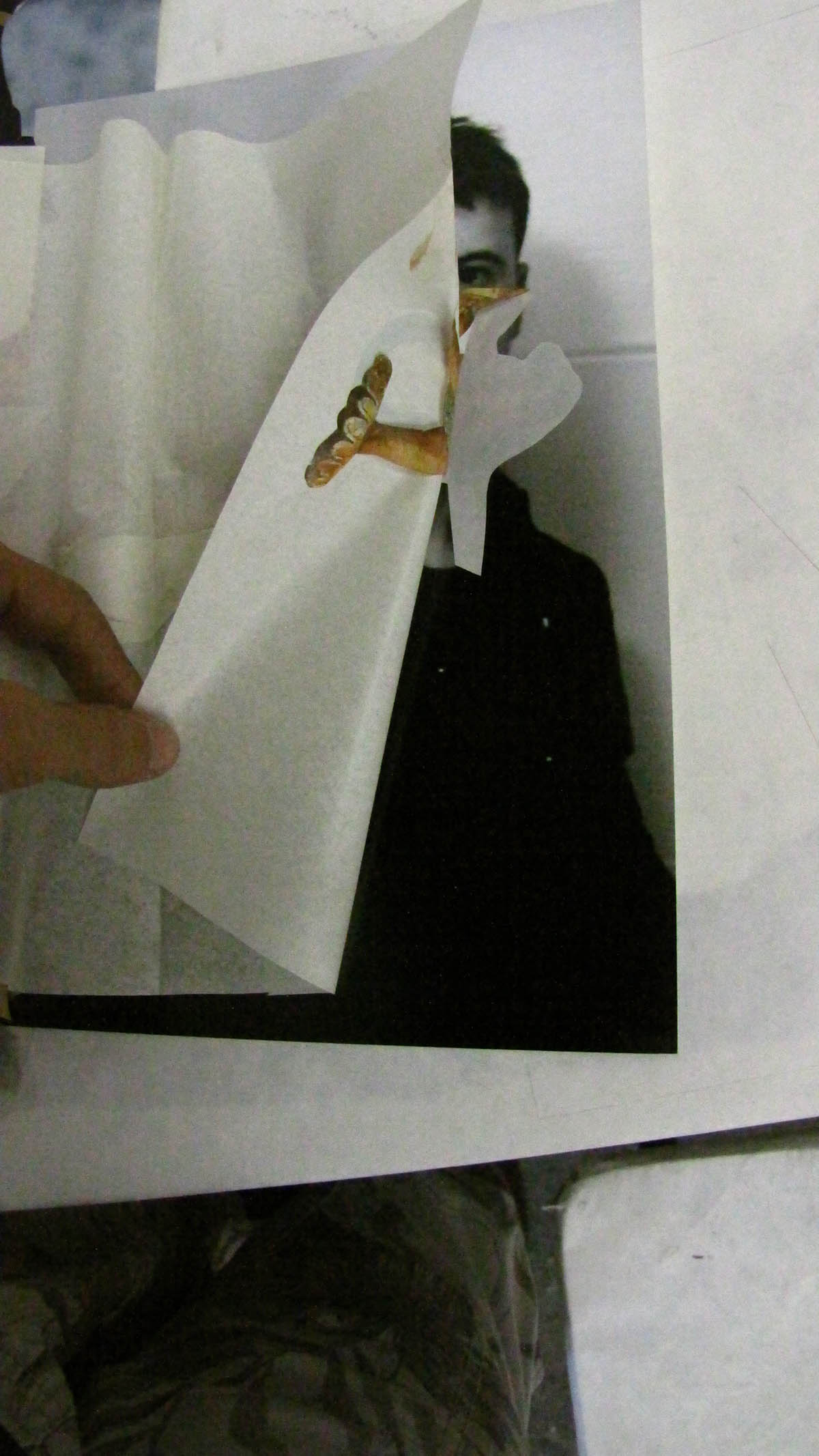
BT: Is this depression constant? Does it last long when it manifests itself?
AG: Yes, sometimes for very long, whole periods of emptiness. My father was a dentist, my mother was a dental nurse. We were much alike, he was always disinterested, indifferent to how things were going, so when he retired he treated people for free, didn’t take their money. He just kept going on like that. I don’t know if he was being generous, but he certainly didn’t care about much. He died when he was about seventy. I didn’t mourn him, or my grandmother. But I think it would have been different if it happened to someone younger. I understand that we have to die someday, but not when we are young.
BT: Are you afraid of death?
AG: Not of death, but rather of old age, when you become helpless, useless and you slowly lose your identity. You look in the mirror and suddenly you see someone else, with an expression you don’t recognise. You realise you are already dead. This terrifies me. My mum still looks the same as I’ve always known her, even though she’s quite old. My brother is almost fifty, forty-eight, I think. He’s still all right.
BT: You feature dentures and dental moulds in your work.
AG: Those were the things I had available. My dad was more of a dental surgeon, maxillofacial surgery, than a dentist.
BT: There are also big house plants, which gives me a bit of a distressing feeling. Everybody associates them with stagnant hallways, the old tourism agencies for example, or public institutions. They were always at the post office (in Romania).
AG: There wasn’t much space in our house so we couldn’t keep a big plant, and my dad had a philodendron or two in his practice office that I would have liked to have at home.
BT: I’d like to go back now to the questions I prepared. Actually, I can see that we’re getting back to them anyway. The way that you paint somehow expresses a state of alteration, and otherness: people without faces, or with their faces obscured, cream fights that destroy a flawless picture, obscurity, fragmentation, the uncertainty of concrete shapes…
AG: It probably has something to do with my fear of old age and its destructive effects. I don’t think about the possible connections between this and my painting for long. Many art theories don’t go further than opinions. Who cares what they say about one painter or the other, about whichever artist?! An El Greco or a Rothko, for example, or any other from art history, stays where it is, no matter the trend, or the opinion of some painter or reputable art critic. They cross centuries with a sort of indifference. That is what I believe, and I would also like to create something of this independent force, resisting its author and all the others that I mentioned earlier.
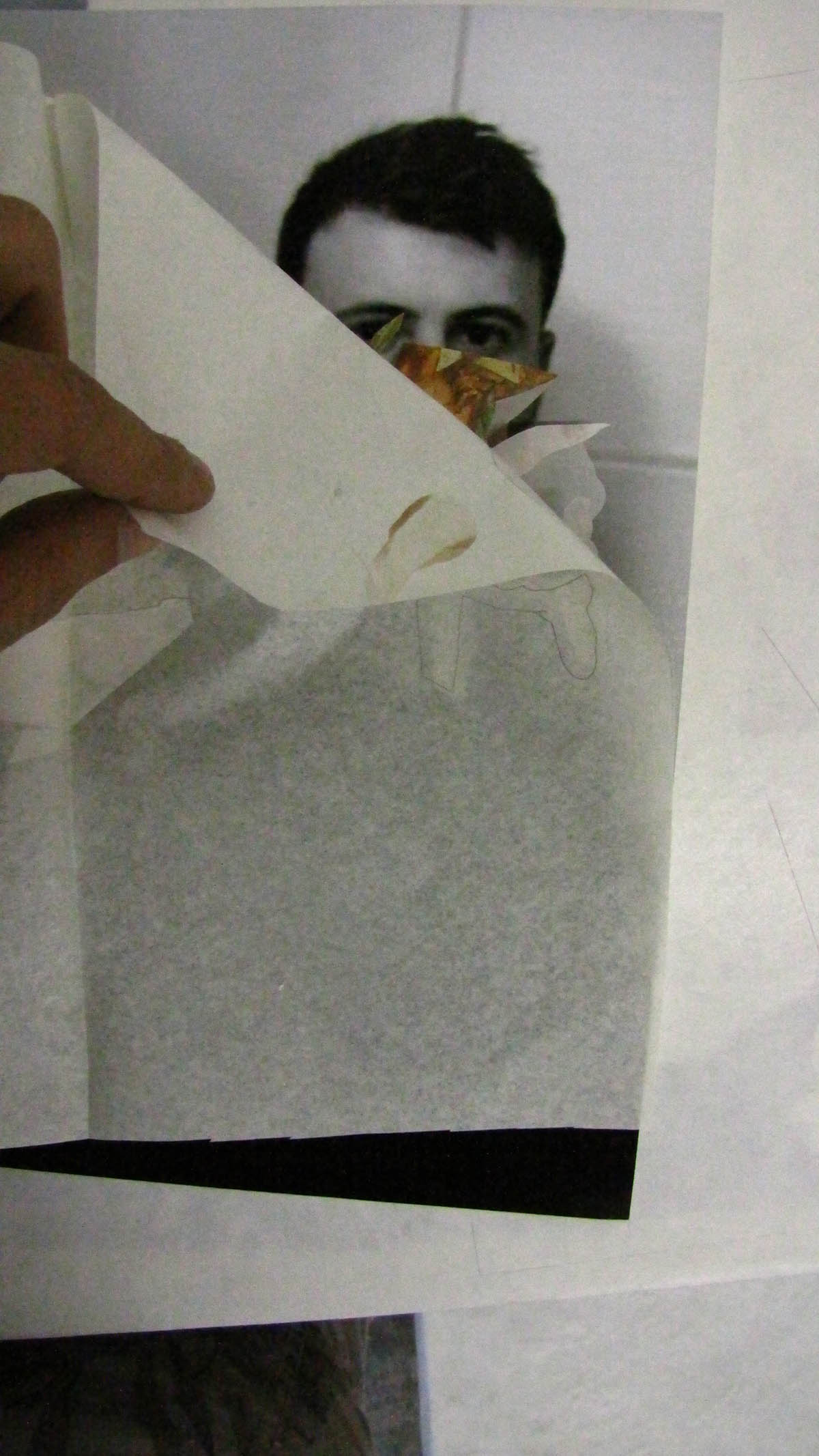
BT: I don’t agree, at least not wholly. Artworks, even when they possess a sort of immutable power, are vulnerable in front of an audience, who always guarantees for one art piece or the other. Museums, for example, have radically changed perspectives towards art, and not always for the best.
AG: All right, but think about how despite this vulnerability there are some works that endure everything, stubbornly, distantly. The ancient Greeks, for example. How these people, who did not live nearly as long as we do, worked?! How fast they managed to produce such masterpieces! There are so many of them. They probably lived, I like to imagine, in an immediate contact with nature, in a simpler, freer way. Such energy! It constantly fascinates me. I don’t want much from painting, just to make one or two of these images, that can stand on their own, without having to resort to external elements, to the author’s biography. From this point of view, I’d like to be like Salinger or Greta Garbo, to disappear in total anonymity while only the works remain. I am almost there with Pie Fight Study no. 2 (2008), which I’ve seen on a T-shirt in London, and then on a few posters somewhere. There’s also an album cover.
BT: Another question I had written down beforehand: do you think true works of art are based on suffering, evil or fear? Missing these, would a work be less powerful? Your works, for example. Could you imagine works of a more neutral character, so to speak, or featuring something else, for example beautiful, or even cute objects and themes, in a brighter light? Many are ridiculously wrong when thinking of Mannerism or the 17th century. Watteau is still undervalued.
AG: What critics or commentators think is not important, Watteau is an important painter. And as far as how serious a painting should look, of course I don’t agree that fear or violence, or the suffering of which you hear constantly, are necessary ingredients for success. I really like humour and I like things that make you laugh. Someone said that they (almost) never give Oscars to comedies. The rule should be changed, as, like you said, behind happy and superficial things are usually the other, serious and grave ones. Anyway, it is very hard to do a quality comedy.
BT: Now it’s time for some existential questions. You said that your father was a strong atheist. This eventually led him into depression and indifference… Is this your case as well?
AG: On the contrary, I wanted to be a priest, and after I read Steinhardt’s journal – to which I return even now – I went to talk to a prior, his confessor. An almost senile little old man, but happy with himself, who turned me away comparing me to the losers who ended up as monks because they had nowhere else to go.
BT: A bit like Wittgenstein… He was rejected three times.
AG: My anguish is not explained by that. It’s just my and my brother’s personality. We are like replicas of our father.
BT: I am going to quote Francis Bacon: I think that life has no sense; but we give it a meaning throughout our existence. We create certain attitudes that give it meaning as long as we exist, even though, in reality, they are meaningless.
AG: I don’t think life is meaningless…
BT: Are you often bored?
AG: Sometimes very much so.
BT: Even painting bores you?
AG: Sometimes, yes. For almost two years I did not paint at all. I lost time and I thought I was lost myself. I did not think of anything, and my plans were very vague. I lived in Vienna for a while, and Victor in Israel. We weren’t amounting to anything. The good thing is that in Vienna I could go to a huge library where I could read and smoke at the same time. This kept me standing. I voraciously read anything I got my hands on, classic literature, books that no one reads anymore. I lived very modestly. I was always at the library. I was also in Italy, where I stayed with a family. I was looking for a job and not thinking about painting anymore. However, when I lived in Baia Mare (Ro) I spent a lot of time in the County Art Museum. It’s a building with a few baroque elements, where nobody set foot anymore. The staff, at first annoyed and a bit bothered by my presence – nobody ever went there – easily got used to my repeated visits. It was very quiet, and I was closely studying every work of the famous colony, of which many European painters were also part, some of them having arrived even from Saint Petersburg. I liked many paintings, and the solitary, desolate atmosphere of the building. I was doing something similar at home as well, where I was constantly watching all the small things going on in the street from my balcony. That is how the time passed, without anything truly happening.
BT: But your presence is always interesting and quite controlled. You don’t look like someone who doesn’t care at all about their appearance. When you don’t care, you don’t mind it either way, whether you are being photographed or not. You take great care of your appearance and you’ve done quite a few self-portraits.
AG: I offer dialogues, images, to anyone, I don’t care about copyright. It’s a care I don’t want to have…
BT: Can I take a photo or two of you? I wouldn’t think of publishing them, it would be just to keep a more credible memory of this conversation.
AG: I don’t see that necessary.
BT: OK, now, let’s talk about money…
AG: My mum or my brother don’t have an exact idea of what I earn. My brother knows, but like me, he doesn’t care about many things. We are not interested in the money itself necessarily. He is a plumber. I offered him an artwork once, and even though he knows they go for so much, he refused. I respect this attitude. Things have stayed the same, and our relationship is the same. It is very comfortable. The family routine is my rhythm. This gives me the certainty that everything is all right. Wherever I am, Los Angeles, Denver, London etc., I call my mum and ask how the winter preparations are going, how the food is going. It’s very important for me to know.
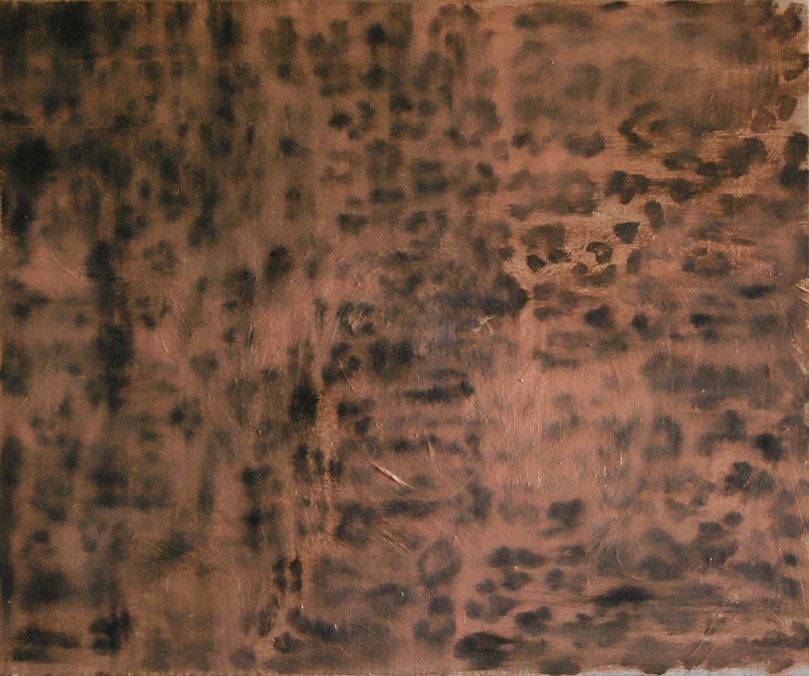
BT: Is your mother a good cook?
AG: Yes, right after we finish [the interview] I’ll go to her place to have a meal. We don’t talk much, she’s always left me alone, never meddled in my decisions.
BT: Is your place tidy?
AG: No way, it’s a huge mess. I don’t waste my time on that and I often lose a lot of supplies by accident. Sometimes I get help to tidy up.
BT: Even so, you prefer a very tidy look, galleries with white walls, rather than a cluttered space.
AG: You can see better in a white cube. A wall like this [he shows a brick wall in the café] is more beautiful than any of my paintings. It would be unpleasant to put them together. Yes, it’s better on white…
BT: Do you like collecting anything in particular? It’s a sedentary activity, in a way…
AG: I don’t collect things. I bought a few works from other artists, among which there is a small Georg Grosz.
BT: Dalí said painting is superior to music, what do you think about it? He always had a subtext that doubled any gesture or affirmation. I consider him a true painter, outside of any appraisals. Few people really look at his paintings.
AG: He really has some good works, but the rest lack their own importance. I saw some very good paintings of his in real life. Dalí is one of the celebrities with whom I would have liked to have a coffee. I won’t meet up with anyone, even though I get many requests. I met Michael York once, and I had the urge to know him personally, to get talking to him. It doesn’t happen often, but he is an exception. I strongly thought of him as John the Baptist in Zefirelli’s film. But in other parts as well. I am not that drawn to artists. I appreciate Francis Bacon, but I don’t know what I would have talked about with him.
BT: Do you like teaching? How do you work with your students?
AG: Yes, I enjoy working with the students. We philosophise too much regarding the works and do no practical demonstrations. It is a trap for them. I don’t care much about copycats, I am not the one who loses. And I would have no reason to create a school of copycats. If there is a reason for that, I don’t understand it.
At the end of our dialogue I showed Adrian Ghenie some of my works.
AG: You go in so many directions. Everything looks so good and you can do anything, installations, manipulated images, collages… The paintings also look very good. There is too much aestheticism and too much care for the images to be immaculate. Maybe there is an element of otherness that is missing, a certain clumsiness.
Adrian Ghenie – www.instagram.com/adrian.ghenie/
About the author: Bogdan Teodorescu (Sibi) is a visual artist and art teacher. Sometimes he writes posts and articles or like to take interviews from other artists, curators or authors. His practice comprises installation, painting or photography. He’s mostly concerned about interdisciplinary exchanges and cultural paradigms. He is a big fan of The Adventures of Tintin.



